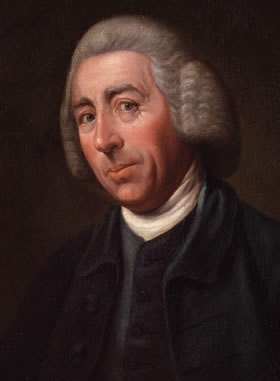 Capability Brown is best remembered for creating landscape on an immense scale, constructing gardens, parkland and large tracts of countryside.
Capability Brown is best remembered for creating landscape on an immense scale, constructing gardens, parkland and large tracts of countryside.
This year marks the 300th anniversary of his birth, but such are the enduring qualities of his work that over 150 of the 260 or so landscapes that he created are still there for all of us to see.
Brown’s real name was Lancelot, but the nickname of ‘Capability’ is thought to have come from a phrase that he often used about a landscape – that it had ‘great capabilities’.
What astounds me most about this man is not just the wonderful sceneries that he created, but the fact that he knew he would never see them in their full glory, yet had the foresight to visualise in his mind what could one day be achieved.
Among the well-known Capability Brown creations such as Stowe, Harewood, Burghley, Chatsworth and Blenheim, sits a landscape that in my opinion demonstrates this far-sightedness particularly well.
Berrington Hall’s park in Herefordshire was one of the last landscapes he designed and took some 30 years to complete, so he never saw it finished. However, it took another 200 years or so before it reached its full intended glory, with majestic oaks and the 14-acre lake, framing the house with an ostensibly never-ending 360 degree view.
What an incredible, unselfish long-term vision Brown projected. Let’s fast forward to the present day and see if this admirable quality can be found coursing through the veins of those in powerful positions today.
I turn to the internet and it does not take me long before a comment from Professor Sir John Lawton, president of the Institution of Environmental Sciences, catches my eye:
“UK politics has a tendency to be short-term and see the natural environment as an impediment to economic growth”.
Oh dear, not a very auspicious start. To manage the countryside sensibly, with the myriad demands placed upon it, must surely demand a long-term joined up plan, which does not view the countryside as an irritation, inhibiting the country’s progress, but instead as a provider.
After all, it grows the food we eat, provides the water we drink, while also allowing us the opportunity to enjoy recreational activities, alongside its beauty and wildlife.
Our countryside is under enormous pressure on so many fronts and shorttermism is one of the greatest threats it currently faces. Governments gain power for just five years, so it has to move quickly to stamp its mark on the landscape, before a fresh set of faces enters the arena and chooses to radically alter things once more.
The grim realities of flooding, soil loss, poor water quality, wildlife decline and climate change will never be tackled without all of us coming together in a cross-party approach, both nationally and internationally.
We all need to work together collectively, not to provide quick, headline grabbing fixes, but to create a practical, long-term vision of what can be achieved. In other words, we need to be intelligent enough to clearly identify the future ‘capabilities’ of our modern day landscape.

Get the FREE weekly GWCT newsletter
Get all of Peter's and the GWCT's latest blog updates sent straight to your inbox each week.
Sign up to our FREE newsletter >